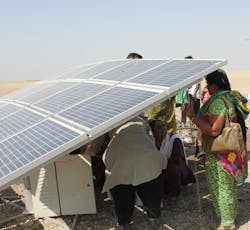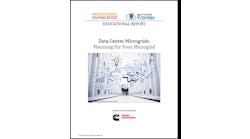That’s the word from Anjali Jaiswal, director of NRDC’s India Initiative.
The main driver for India’s microgrid market is the Indian government’s decision to boost its solar target from 20 GW to 100 GW, she said.
We’d like to hear about microgrid projects in India. Please post below or on our LinkedIn Group, Microgrid Knowledge.
“That’s about 40 mid-sized coal plants. It’s a huge opportunity for a businesses that wants to see solar technology succeed,” Jaiswal said. “Over the weekend, Obama was there, and the two leaders agreed to work on investment in solar to get the solar market to scale.”
While much of the market is for grid-connected solar, the microgrid market is growing, she said.
“The majority of the focus has been grid-connected energy. But to get to people who don’t have access to power, the prime minister and government know that microgrids and off-grid technology are the way to get there.”
Microgrid development in India is still in its early stages, but is promising, she said. In rural villages across India, microgrids provide citizens with lightbulbs that allow children to do homework, and with electricity and light that allow people to be productive.
A number of companies, including SunEdison, have entered the off-grid market, she said.
“Part of the discussion Obama and the prime minister had was about removing trade barriers and import taxes…India is working on providing benefits for imports of clean energy technology into India, which is a boost for US companies.”
The main barriers to microgrid development are policy support from the government and low-cost financing, she said.
“International and bilateral funding and investment can help decrease borrowing costs in India,” Jaiswal said. “Because of its developing economy, the cost of capital and interest rates are high in India. Developed economies tend to have lower interest rates and easier access to capital. The US can create investment programs with Indian institutions to lend at lower interest rates to finance solar, wind and energy efficiency technology in India.”
Joint programs like Power Africa are great way to grow off-grid solar power, she said. The US and India are exploring creating programs like Power Africa to boost India’s off-grid market.
In addition, The National Solar Mission could focus on mini-grids and financing for the off-grid sector, she said. And the Indian Overseas Bank, Export-Import Bank of the US and World Bank are all possible lenders, said Jaiswal.
The Self-Employed Women’s Assoc. of India, a small lending group for women, is another option.
“These entrepreneurs don’t want handouts; they want loans that allow them to support their families and be part of the climate discussion,” she added.
Whether India is boosting its on-grid solar or lending money for microgrid development, it has clearly assumed a voice in the climate discussion.
“Building an economy that provices energy access and prosperity while fighting climate change is vital to India and the rest of the world,” said Jaiswal.








